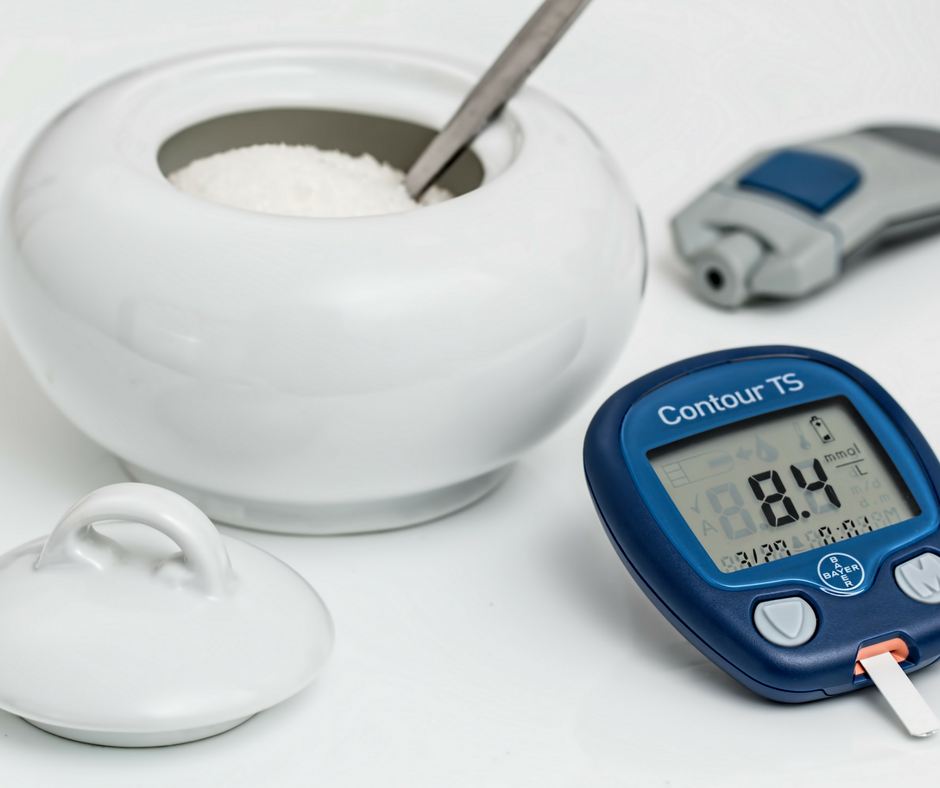
If you read my post on Pregnancy with PCOS, you’ll already know that this pregnancy and my last have been starkly different. Last pregnancy I was in and out of doctors visits and ultraound appointments at the hospital for much of my third trimester, managing my gestational diabetes, pregnancy-induced hypertension and growth concerns (which we know now, were largely due to my undiagnosed and uncontrolled PCOS). This time, I vowed to approach my pregnancy differently. I knew my heightened risk of developing these conditions again, due to both my history and my hormonal condition, but I wasn’t willing to accept them as my fate. I spent the year prior getting my hormones back into balance and preparing my body for a healthier pregnancy, and that was no doubt the largest contribution to my lack of complications this time– but there were also some specific steps I took, once I became pregnant, to prevent developing conditions like gestational diabetes. So although everyone is different (and it’s crucial to work with YOUR healthcare providers and nutritionist to determine the best steps for YOU), I thought it was important to share what I learned about avoiding gestational diabetes, the best I possibly could.
When I shared with my midwife that I had GD in my first pregnancy, she urged me to get an early glucose test done- at 15 weeks, to check for early onset GD. Knowing my history of insulin resistance and knowing my carbohydrate tolerance (far below the required 50 grams of ingested glucose– without any protein or fat to balance), I wasn’t surprised when I failed the 1-hour test. However, when my midwife shared with me it was only by three points (last time I failed by a whopping 70- I didn’t even have to take the 3-hour to be diagnosed) I was reassured that I was doing something right. My body, like many others with PCOS or insulin resistance, simply takes more time to process glucose (and more help to balance it) than others. So I prepared myself for the possibility of 25 weeks of diabetes as I went in for my 3-hour test. I did nothing in preparation for either of these tests (except fast, for the three hour) aside from ensuring I was getting an adequate amount of carbohydrates, spread throughout the day, for the few days prior, to assure my body was used to consuming carbohydrates regularly.
Lo and behold, I passed my three hour test– with flying colors. Twice. (They required me to take it again between 26-28 weeks, as it can develop over time). My fasting numbers (my biggest struggle during my first pregnancy), were in the low 70’s, and my others were well within range (in the 80’s-90’s).
So what did I do to keep my blood sugar in check to avoid the dreaded repeat GD? Not much more than I do, otherwise- to be completely honest! Blood sugar balance is a cornerstone for an overall balanced diet and easily maintained physique, so keeping my blood sugar balanced was not new to me. It’s something I work with each and every one of my clients, no matter what their history. However, pregnancy cravings, nausea and the like DO make these things more difficult! So balance in every area was certainly key.
1. I balanced my blood sugar nutritionally ahead of time– and stuck with it. Sure, there were days where toast was all I could stomach, but I did my best to have it with some grass-fed butter, a slice of cheese or a hard cooked egg- whatever I could handle, to ensure I was balancing my blood sugar with protein and/or fat at every meal and snack. I also made sure to choose REAL FOOD carbohydrates– those are, for the most part, carbohydrates with FIBER (like starchy vegetables and whole, sprouted grains) to avoid that blood sugar spikes and drops.
2. I didn’t take pregnancy as a free-for-all-food-fest. (But I didn’t sweat the occasional treat). Just because I’m a nutritionist does not mean I’m immune to pregnancy cravings! Though I kept my indulgences to the ones that I really, really wanted– and for the most part, those were options that were also more blood sugar balancing than not (like full fat ice cream instead of frozen yogurt and cheesecake instead of a brownie). I balanced this with whole foods and didn’t stress over treats- because I knew I was eating a balanced diet, overall.
3. I ate small meals, throughout the day, and always had a snack at night. This is KEY to balancing blood sugar overnight and into the wee hours of the morning. Having a carb-and-protein snack at night (like cheese and crackers) was a great way to avoid middle of the night blood sugar drops- and resulting morning sickness.
4. I stayed active. Staying active this time around was HUGE to balancing my overall health compared to last time. It’s not just about cutting carbs- it’s about BALANCING those carbs and UTILIZING them well (with regular activity). I combined strength training, running as long as felt good (until 7 months), regular walks as well as yoga and pilates for a balanced pregnancy fitness routine that felt good and helped balance my blood sugar, overall.
5. I listened to my body, not any specific expert. I know my body better than anyone else- and you know yours, too. I KNOW that my body doesn’t necessarily need the recommended 175 grams (minimum) of carbohydrates a day recommended for pregnant women (where that number comes from, is incredibly unclear in the first place). Sometimes it does, sometimes it doesn’t. I never counted- I simply listened to my body and served myself a portion of carbs, when I needed it, that I knew worked for MY body, pregnant or not. This isn’t to say I was under eating by any means. I ate a LARGE variety of vegetables and low sugar fruit and a huge proportion of protein and healthy fat, which more than makes up for the lack of starches (and happens to be much, much more nutrient dense, to boot). I kept track of my weight gain and baby’s growth at my appointments (but never at home- I trust in my body’s wisdom to gain the weight it needs for a healthy baby) to ensure everything was on track- and it was– 175 grams of carbs or not.
Gestational diabetes is incredibly common. It effects up to 18% of pregnant women- and for some women, it is simply unavoidable. But all of these things I mentioned can be utilized whether you are trying to avoid or have gestational diabetes. It’s all about listening to YOUR body (and your healthcare providers) and finding the right balance for YOU in order to have the healthiest pregnancy possible for you, and your baby. You’ve got this mama! A healthy pregnancy and a healthy baby is possible for every woman.
Want to check out a sample blood sugar balanced 5-day pregnancy meal plan as well as a printable of my top 10 pregnancy superfoods? Click below to download for free!

For more on gestational diabetes, my favorite (and my recommendation for all my pregnancy clients) is Real Food for Gestational Diabetes.
Leave a Reply Cancel reply
5-day series: how to get started with meal prep for easier meals
free email series
©️ 2025 Kristin Dovbniak for Healthy Mama Kris | Template by Maya Palmer Designs | Privacy Policy | Terms
